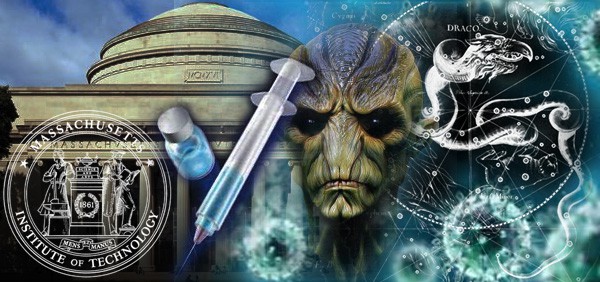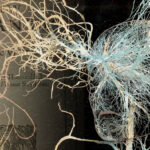SkywatchTV | February 12, 2015 | SkyWatch Editor
Genetic modification can be applied to humans, too. Though “gene therapy” is in its infancy, it holds great promise. As remarkable as the human body seems, it is inherently prone to a myriad of malfunctions, some of which are genetically driven. Some individuals already meet or exceed society’s concepts of the ideal physique or intelligence. These handsome, strong, smart, curvaceous over-achievers enjoy special social privileges such as better jobs, better incomes, greater prestige. What if prospective parents could select the pro quarterback prototype, or the gifted actress package? What if they could pre-select a skin color? Why would that hurt anybody? It wouldn’t eliminate competition, as beautiful people would still vie with each other for maximum socioeconomic advantage. As we learn how to synthesize new, never-before-seen genes, or just upgrade genes for traits now seen only in other species, this could get a whole lot freakier. Humans with gills and webbed digits? Extra arms? Smarter brains? Tolerance for extended stays in zero gravity? Knowledge is growing exponentially. Ninety percent of all data ever generated by humans materialized during the past two years. As we learn to comprehend and apply this data, tomorrow’s realities will seem as strange as space travel would’ve to the Wright brothers. More than genetics are involved when it comes to redefining what it means to be human. When nanotechnology and computer science also mature, we’ll face the advent of the Transhuman Age. Stay tuned
New genes: angels or demons?
Hays Daily News
Synthetic organisms, created in a lab, are unlike anything occurring in nature.
Existing natural organisms can serve as a framework into which extra genes (plucked from other natural organisms) are inserted. The foreign genes usually function normally in their new host, without disrupting the host’s own vital processes. Thanks to a common evolutionary heritage, jellyfish genes can glow in a healthy tobacco leaf.
Can artificially merging genes produce unanticipated ripple effects?
An example would be a germ which, after modification, demonstrates unpredicted resistance to antibiotics, or perhaps greater virulence in humans. Should this bug “escape” the confines of its lab and enter the greater biosphere, it could act as a new Black Death.
One way of avoiding such catastrophes is engineering “safety locks” into organisms being modified for industrial or therapeutic purposes. For example, while engineering a strain of E. coli to produce a scarce drug in quantity, certain of the germ’s own genes can be deleted or altered. This might render them unable to make some enzyme needed to survive — unless a certain amino acid is added to their growth media in unnaturally large quantities. Should they “escape,” they’ll simply starve to death.
In the future, we might see banks of “chassis” cells — cells that do little more than eat and reproduce — to which foreign genes can be added at will. The characteristics of generic host cells can be fully designed and explored in advance to minimize the potential for adverse cell products to emerge.
We can also create genetic “parts libraries,” free-standing genes or gene complexes coding for specific traits. Need to create a germ that manufactures Protein X? Simply take a Protein X gene kit off the shelf, and splice it into a chassis cell.
Recently a research team created an analog of DNA, using synthetic nucleotides to produce a double-helix structure that resembles, and to some extent mimics, DNA. Such a DNA surrogate could be used to generate truly alien biology. Who knows how such critters would behave?
Genetic modification can be applied to humans, too. Though “gene therapy” is in its infancy, it holds great promise.
As remarkable as the human body seems, it is inherently prone to a myriad of malfunctions, some of which are genetically driven.
Some abnormal genes code for harmful byproducts; these could in principle be “corrected,” or simply trimmed out. Some people are deficient in certain genes, which could be added back into their genomes to restore normal function.
In some cases, gene-modified human cells can be introduced into the bodies of humans. These cells then take up residence, and function according to their programming. While native cells with the original defects still exist in various body tissues, the new-gene cells could manufacture enough insulin, for example, to satisfy the body’s needs.
Some disorders involve pervasive genetic defects that aren’t limited to just one organ’s tissues. In these cases, merely transplanting a few corrected cells won’t be sufficient to eliminate the problem. Corrected genes would have to be substituted early in embryonic life, so they fit in with the other genes as cells reproduce and differentiate into various tissues. This might even be done prior to conception, by altering egg or sperm genomes before they join to produce a zygote.
Neutralizing a gene that codes for disease is one thing; but what if we could program otherwise normal cells to “correct” short stature, or to produce fast, strong athletes?
Some individuals meet or exceed society’s concepts of the ideal physique or intelligence. These handsome, strong, smart, curvaceous over-achievers enjoy special social privileges such as better jobs, better incomes, greater prestige.
What if prospective parents could select the pro quarterback prototype, or the gifted actress package? What if they could pre-select a skin color? Why would that hurt anybody? It wouldn’t eliminate competition, as beautiful people would still vie with each other for maximum socioeconomic advantage.
Of course, anyone who couldn’t pre-select elite babies would be at a disadvantage, relying — as they do now — on pure chance to endow their offspring.
At present, only the wealthy might afford such high-tech selection of their descendants. They can already buy ready access to top-flight corrective lenses, orthodontics, apparel, education or medical care.
In America, we already face a wide income gap, which translates into a privilege gap. When genome selection becomes feasible, the privilege gap will widen; compared to members of the economic elites, the rest of us on average will become uglier, more stupid, less motivated. A stark, two-tiered society emerges, populated by enhanced humans and their unenhanced neighbors.
As we learn how to synthesize new, never-before-seen genes, or just upgrade genes for traits now seen only in other species, this could get a whole lot freakier. Humans with gills and webbed digits? Extra arms? Smarter brains? Tolerance for extended stays in zero gravity?
Knowledge is growing exponentially. Ninety percent of all data ever generated by humans materialized during the past two years. As we learn to comprehend and apply this data, tomorrow’s realities will seem as strange as space travel would’ve to the Wright brothers.
More than genetics are involved when it comes to redefining what it means to be human. When nanotechnology and computer science also mature, we’ll face the advent of the Transhuman Age. Stay tuned.
Jon Hauxwell, MD, is a retired family
physician who grew up in Stockton and now lives outside Hays.






![BLIND HORIZONS, BROKEN HEARTS… [some thoughts on 2021, and beyond]](https://christianobserver.net/wp-content/uploads/2022/02/space-oddysey-150x150.jpg)



